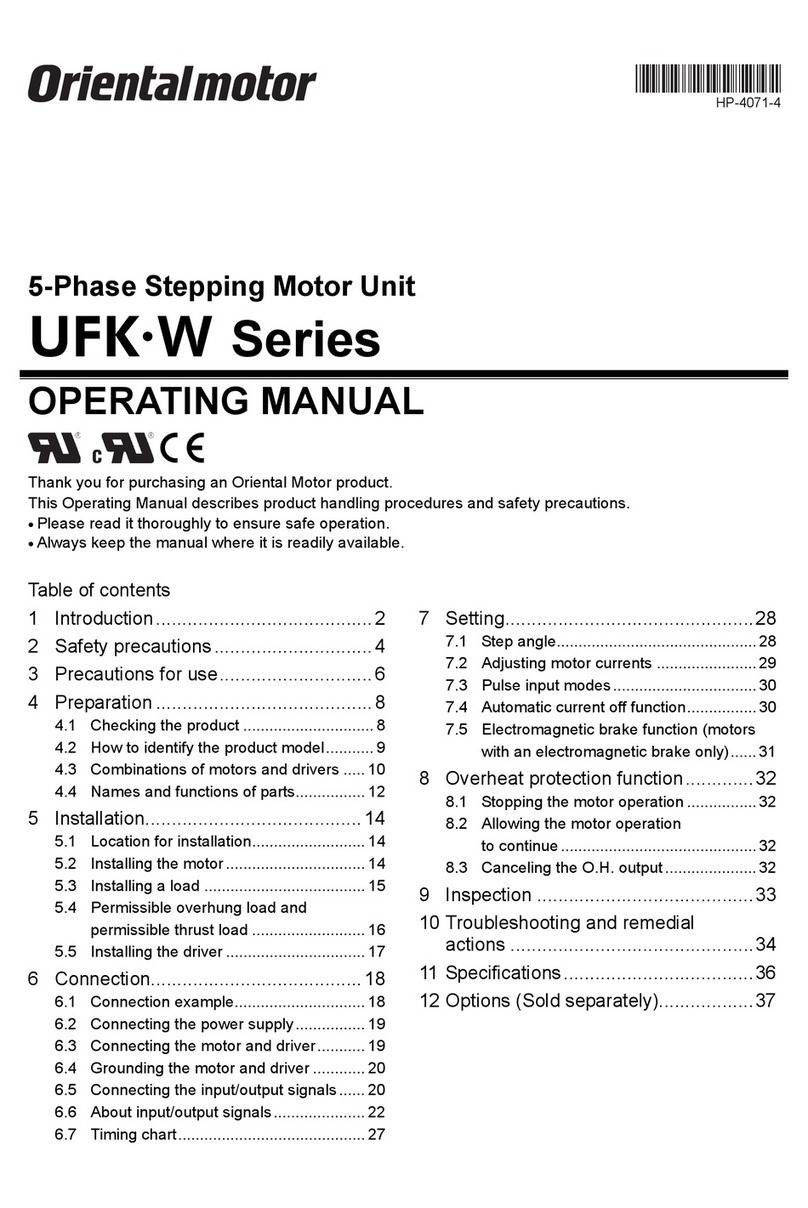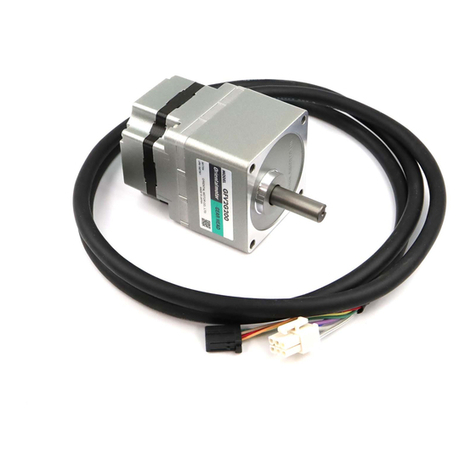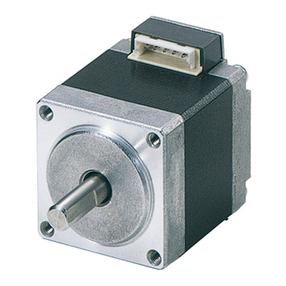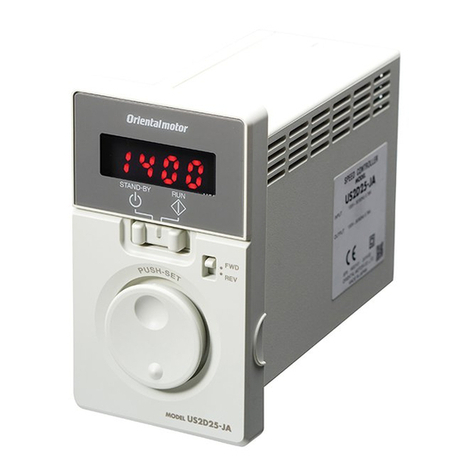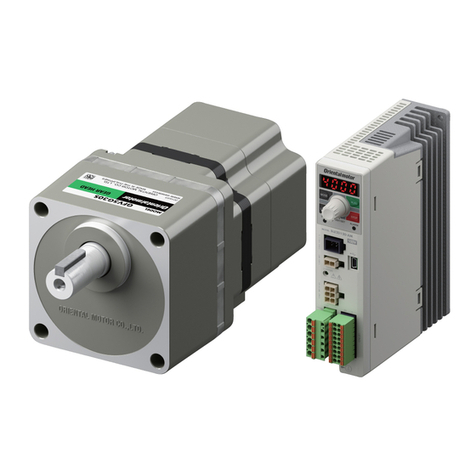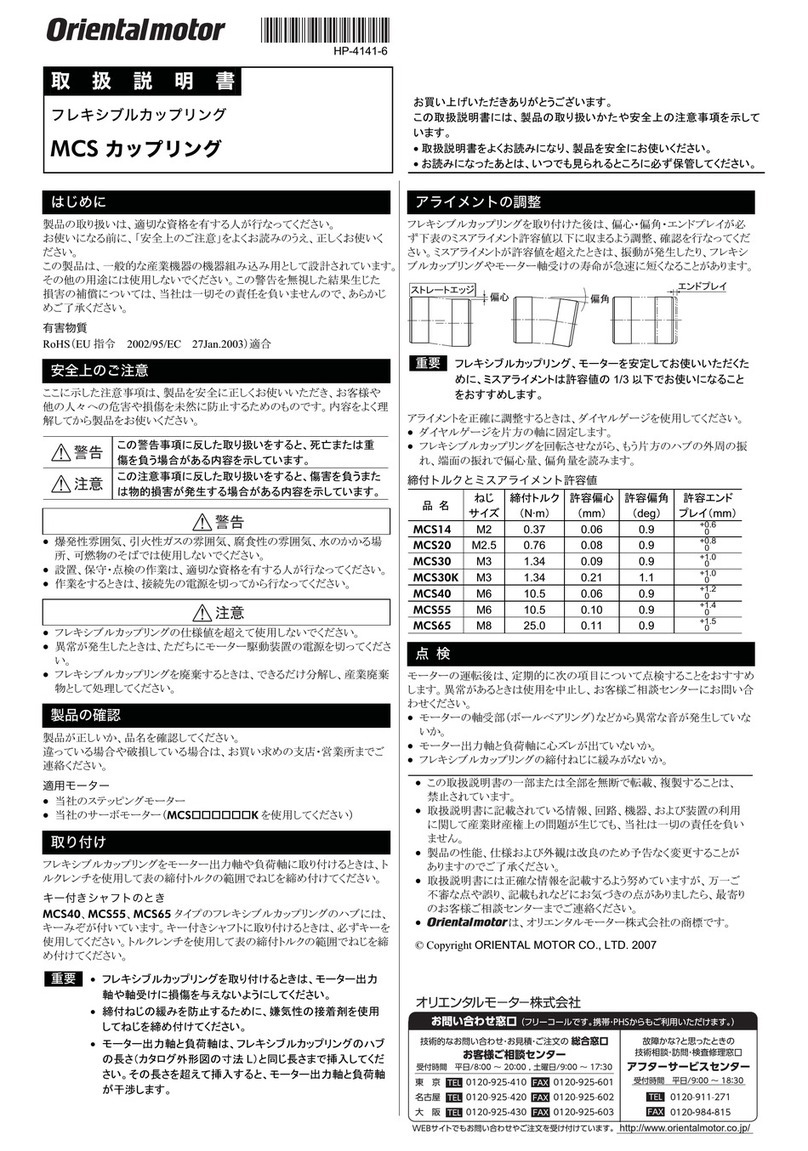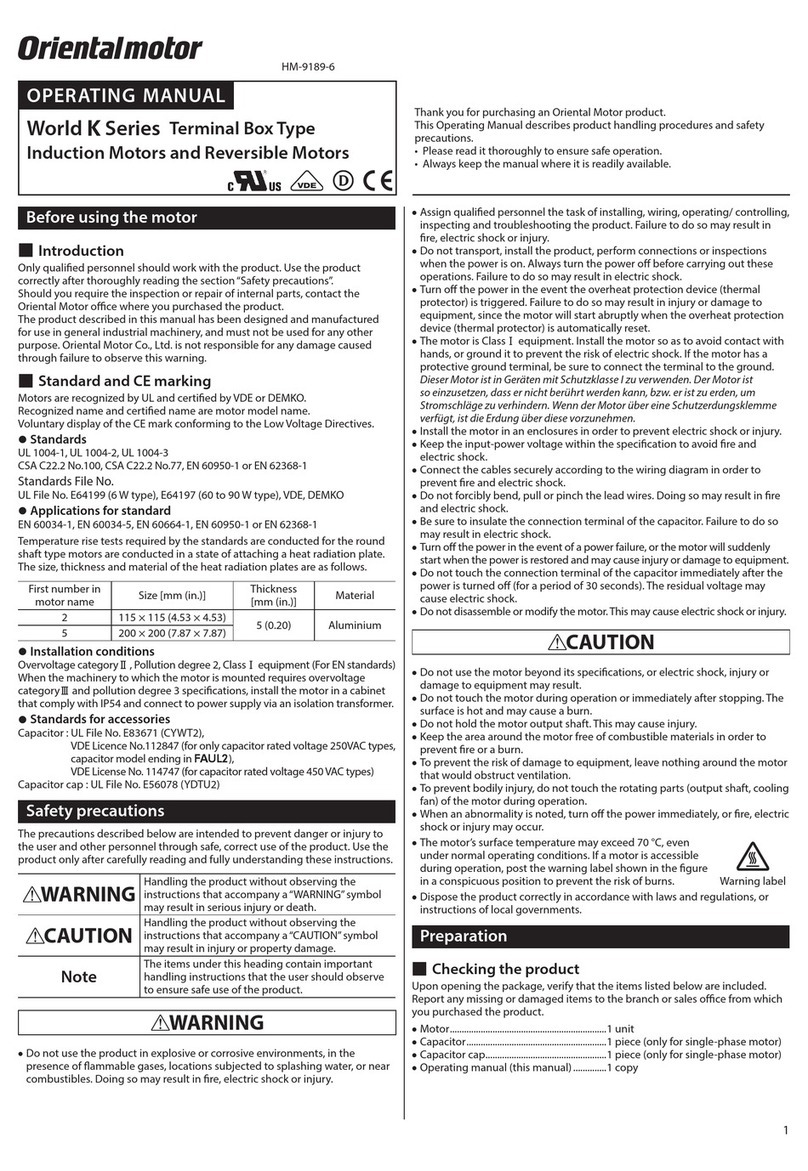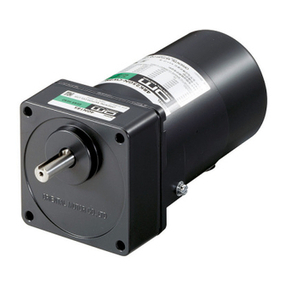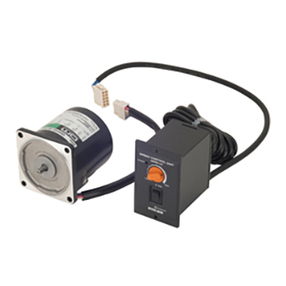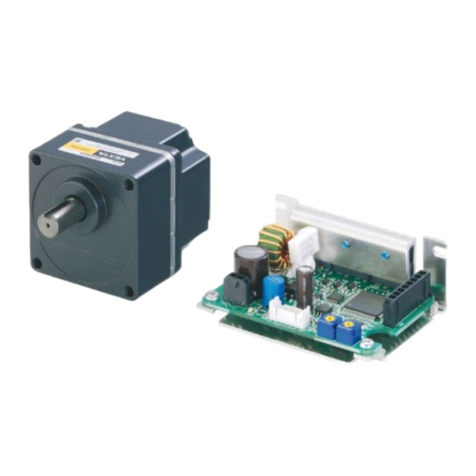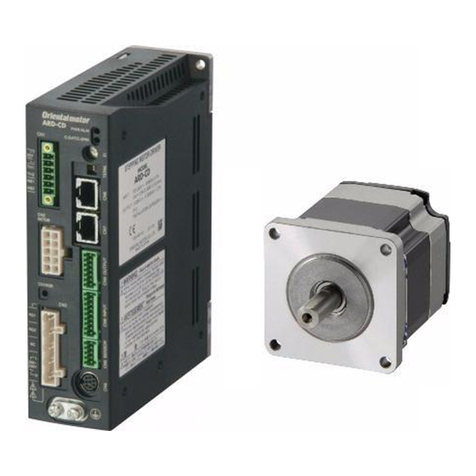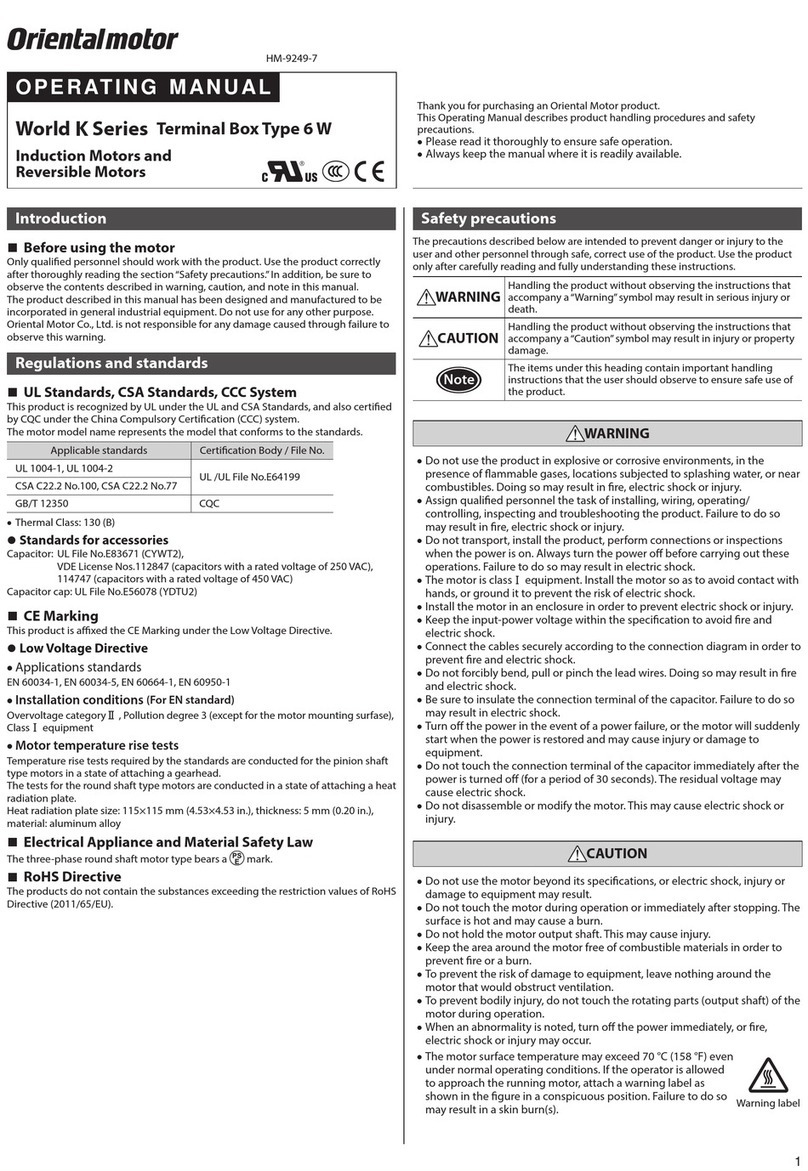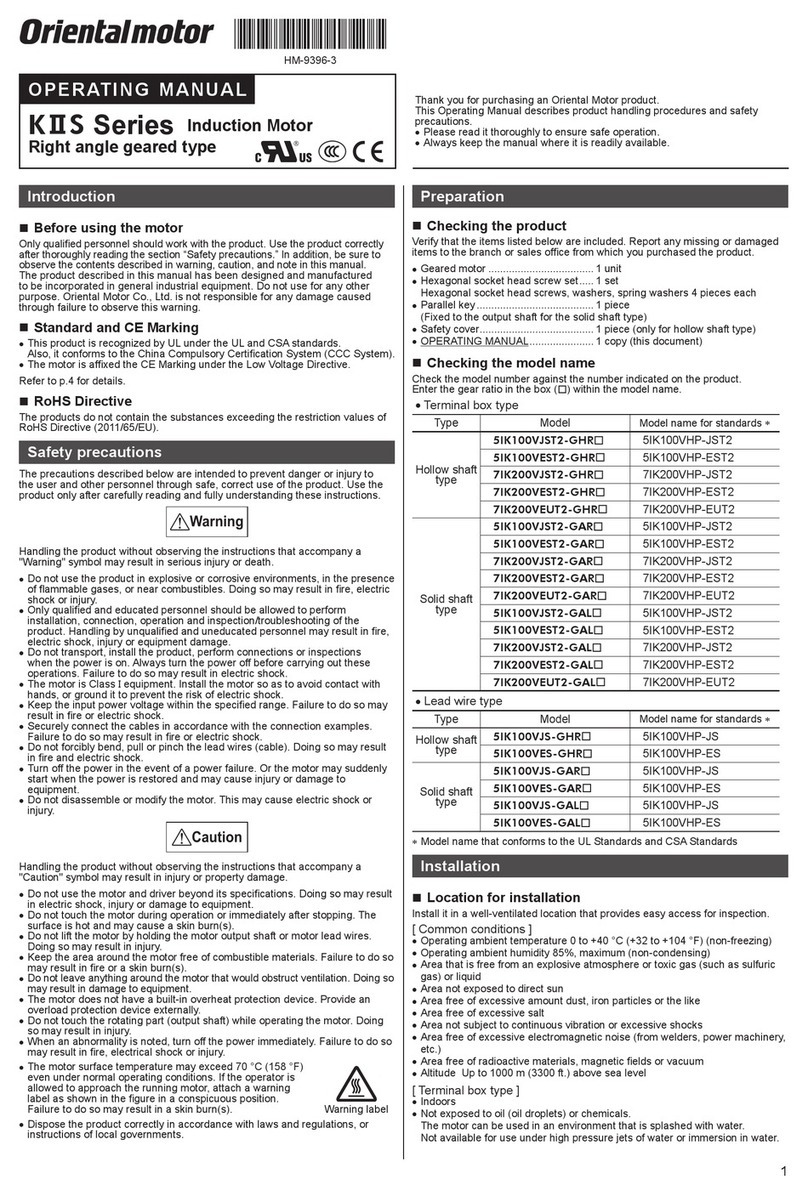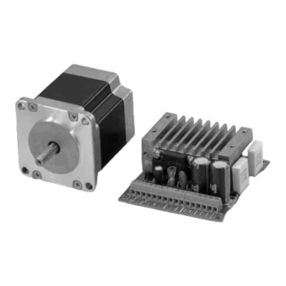
3 Precautions for use
−8 −
3 Precautions for use
This section covers limitations and requirements the user should consider when using the RK series 5-phase
stepping motor unit.
• Conduct the insulation resistance measurement or withstand voltage test separately on
the motor and the driver.
Conducting the insulation resistance measurement or withstand voltage test with the motor and driver
connected may result in injury or damage to equipment.
• Do not apply an overhung load and thrust load in excess of the specified permissible limit.
Be sure to operate the motor within the specified permissible limit of overhung load and thrust load.
Operating it under an excessive overhung load and thrust load may damage the motor bearings (ball
bearings).
• Operate the motor with a surface temperature not exceeding 100 °C (212 °F).
The driver has an overheat-protection function, but the motor has no such feature. The motor casing’s surface
temperature may exceed 100 °C (212 °F) under certain conditions (ambient temperature, operating speed,
duty cycle, etc.). Keeping the surface temperature of the motor casing below 100 °C (212 °F) will also
maximize the life of the motor bearings (ball bearings). When a harmonic geared type is used, make sure the
gear case temperature is kept at 70 °C (158 °F) or below to prevent degradation of grease applied to the gear.
• About maximum static torque at excitation
Maximum static torque at excitation represents a value obtained when the motor is excited using the rated
current. When the motor is combined with a dedicated driver, the maximum static torque at excitation drops
to approximately 50% due to the current cutback function that suppresses the rise in motor temperature in a
standstill state. Acceleration and operation at the maximum static torque at excitation is possible in start-up,
but it only has approximately 50% holding power after it has stopped.
When selecting a motor for your application, consider the fact that the holding power will be reduced to
approximately 50% after the motor has stopped.
• Install the driver in a vertical position.
The driver’s heat-dissipation function is designed according to vertical orientation. Installing the driver in any
other orientation may shorten the life of electronic parts due to temperature increases within the driver.
• Use the motor equipped with an electromagnetic brake for an application involving
vertical travel.
For an application involving vertical travel, select a motor equipped with an electromagnetic brake so that the
load can be held in position. Use the electromagnetic brake to hold the load only after the motor stops. Do not
use the electromagnetic brake for the purpose of stopping the motor. Repeated use of the electromagnetic
brake for the purpose of stopping may cause excessive wear in the brake hub, thus reducing the brake’s
holding capability. Since the electromagnetic brake is of the non-excitation type, it can also be used to hold
the load in position in the event of a power failure. However, do not use the electromagnetic brake as a safety
brake of your equipment, since it is not designed as a mechanism capable of securely holding the load.
• Connecting a motor with an electromagnetic brake
The electromagnetic brake operates via the ON/OFF status of the driver’s internal DC power supply. When
connecting the motor, verify that the connection for the electromagnetic brake’s lead wires has the correct
polarity.
• Preventing leakage current
Stray capacitance exists between the driver’s current-carrying line and other current-carrying lines, the earth
and the motor, respectively. A high-frequency current may leak out through such capacitance, having a
detrimental effect on the surrounding equipment. The actual leakage current depends on the driver’s
switching frequency, the length of wiring between the driver and motor, and so on.
When providing a leakage current breaker, use the following products, for instance, which have
high-frequency signal protection:
Mitsubishi Electric Corporation: NV series
Fuji Electric FA Components & Systems Co., Ltd.: EG and SG series
